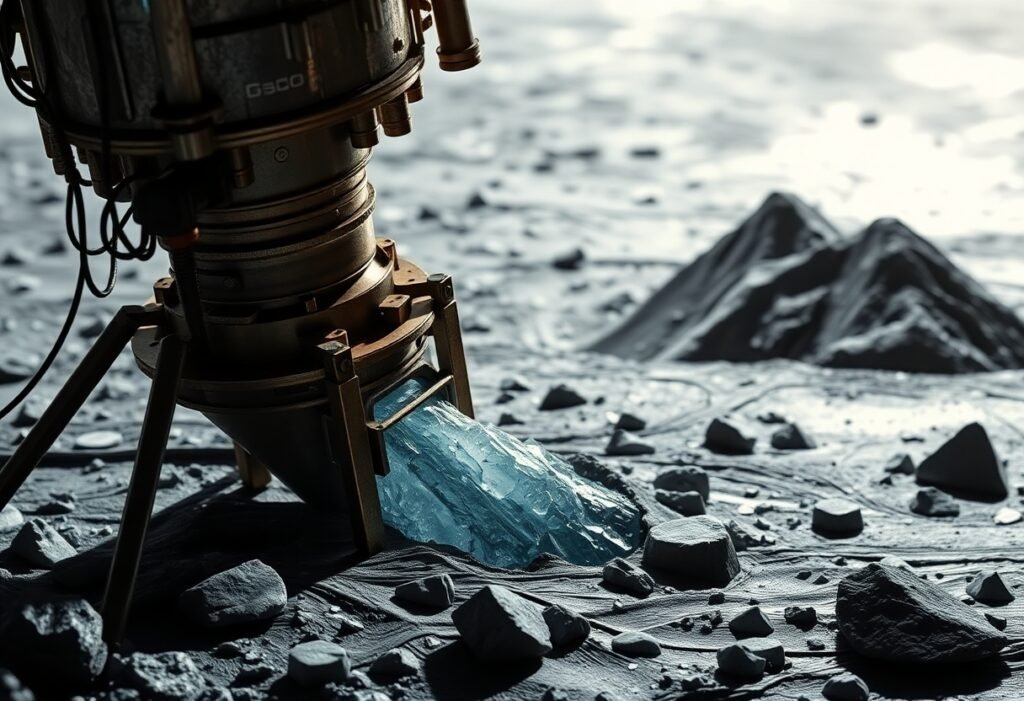There has always been a lot of mythopoeic interest in the Moon from human beings through myths handed down through generations until fictional versions of this celestial body made today, but it is only recently that this fascination has started transforming into commercial activity- bothered private lunar exploration coming into play.
This, in short, heralds the dawn of a new age for moon missions, powered by private players and accessible technologies. In this post, we want to review what the commercial lunar exploration is about, which players form the backbone of such exploration into the future, and what this new chapter may hold for those interested in exploring this exciting domain.
The Emergence of Commercial Lunar Missions

Breakthroughs in Technology
Many of the private players’ advancements in technology enable them to compete and try their luck in lunar missions. Space is now opening up due to technological advancement in spacecraft structure and power systems and remote operability.
Cost Reduction
The costs of space missions have decreased over time as the technological improvements increased and as new contenders into space enter the arena. This means that there will be cheaper times in moon exploration, making it a bit more sustainable, financially.
New Opportunities
The Moon is thought to be the resource bank. Most of the business corporations would consider the Moon as one of the strategic imperatives to obtain resources, sustain human habitats, and utilize the potential of tourism in the space world.
Federal Partnerships
They wholly depended on space agencies that can focus and organize themselves to realize their vision, but now, most space agencies have gone the route of outsourcing from private firms, so they can capitalize on their experiences to mount more frequent and multipurpose missions.
Key Players Driving Lunar Business Growth
The following are some commercial lunar mission pioneers, and they will be explained here as summary:

SpaceX-this company is pioneered by Elon Musk where reusable rockets and all high profile ambitious missions have come into existence within it. Thus, SpaceX has now been facultatively committing towards Mars with its running participation in lunar missions. Falcon Heavy and Starship are its rockets, which will be engaged in the task of moving payloads and crew to the moon.
Blue Origin
Blue Origin is another company that launched by Jeff Bezos to make space more accessible for exploration and to brighten up this world. In this strategy towards introduction of lunar missions for Human on Moon, new Glenn rocket, and Blue Moon lunar lander are components.
Astrobotic
Dedicated in offering lunar landers for all payload reaches to the Moon, in the latter sense distinguishing them from SpaceX or Blue origin. Its Peregrine lander can now take scientific experiments, rovers, or other loads to various lunar destinations.
Intuitive Machines Provide
The other market player of ‘Intellectual- Machines” can be considered as a company working in the sector of commercial lunar exploration. Lunar landers and rovers are in plans for production to suit scientific research and exploration missions.
In-space
A Japanese company that is developing the commercial lunar lander as a way to deliver payloads to the Moon is In-space. it will have its own mission of acquiring lunar resource mapping and construction of lunar facilities.

Goals and Objectives of Commercial Moon Missions
Its arrangements in commercial lunar missions would still have more goals and objectives such as: Commercial lunar missions have a range of goals and objectives, including:
Resource Extraction: Resource such as water ice and rare minerals suddenly caught the interest of businesses as they want to earn money by extracting these materials. Water can be included in supporting life and fuel. Some other materials, such as those rare minerals, can be used especially in the manufacture and electronics.
Lunar Habitats: Internal habitat construction is one of the objectives that have to be achieved. A long-term goal for corporations would be to build lunar habitats for manned missions that could support several generations of people and serve as the launch pad for further expeditions.
Space Tourism: As technology advances, many new ideas and products are coming up in the market, including space tourism. New wake/space tourism is encouraging several more players to sell packages for moon travel for private citizens and researchers.
Scientific Research: Missions will also go for other areas of scientific research, hence extended missions on the moon, including making a better insight into the lunar surface, resources on it, and the capability of the lunar environment for sustaining life.
Infrastructure Development: Lunar base, communication and transport system are some of the areas that would need infrastructure development for the sustainable future of lunar exploration.
Impact and Outcomes of Lunar Exploration
The transformation into the commercial exploration of moon has numerous consequences. The transference into commercial lunar exploration bears wider impacts:
Economy: The introduction of private side participation is believed to increase the more of the economy in space related fields. New industries will rise and provide new job openings and employment areas in technology, engineering and the like.
Tech Innovation: This will lead to making technological innovations since private companies would compete to make space exploration as cheap as possible.
International Cooperation: Yes, the business use of the moon will require intergovernmental collaboration since different state agencies are more likely to use space services to achieve very much the same objectives as other space companies.
Inspiration and Education: The new exciting advertisement of the coming trips to the moon will turn out to produce more young scientist, engineer, and explorer. Along this process, the focus would be more on public dissemination and educational programs.
Environmental Concerns: This is the reason why, as we maneuver around the Moon, we take into account the environment. It implies that careful management of resource utilization will be critical to the existing lunar environment.

Obstacles and Factors to Address
Exciting Aspects Regarding Commercialization of Moon have Some Exciting As Well as Challenge : Exciting Aspects Regarding Commercialization of Moon have Some Exciting As Well as Challenge:
Robust Technical Challenges
Engineering and application challenges confront technological aspects relative to landing and roaming on the moon. Precision on landing, the condition of the lunar surface, and long-duration travel are some of the challenges that sustainable companies must deal with in achieving sustainable space exploration.
Weaknesses by Regulation
Some regulations on space exploration include international treaties. Therefore, companies have to know these regulations to enable them to comply with them, thus eliminating ambiguities.
Cost Control
Despite this, space missions remain one of the most expensive businesses where costs are immediately cut. How should they manage their finances and raise required funds for their missions?
Safety and Risk Management
During the satellite launched days in the years between the 1950s and early space exploration missions, it was known that certain dangers exist in the universe regarding which there is hardly any control. Safety provided to crew members, their tools, and missions undertaken is thus something precious for everybody engaged.
Sustainable Approach
As lunar exploration is continuous, that has to lay some grounds on measures that will encourage the protection and/or conservation of contamination from the lunar environment.
AMS-02: Shaping the Future of Commercial Lunar Exploration
The commerce of CE and lunar exploration has a bright future ahead. As technology advances and private companies drive innovation, we may expect:
More frequent missions Increased participation by the private sector will also mean increasingly frequent manned and diversified unmanned missions to the moon.
Lunar Infrastructure Structures and utilization of habitats, research stations and transportation systems are needed on the Moon for long expeditions and all sustainable uses.
Global partnerships This involves all governments and space agencies and private companies in building greater number of players in lunar projects to improve international cooperation in surface exploration of the moon.
Conclusion
While the Moon mission is embracing a new chapter of commercialization at present, the moon exploration itself is facilitated through private and technological resource. Revolutionary changes in the Moon’s knowledge, country economic advancement, and encouragement of future generation could be this. But this is one beautiful scenario with innumerable future opportunities for scaling lunar commercial exploration. Since the new phase is begun, all public-private partnerships, space organizations, and international communities will be the driving and determining force for achieving the vision of creating a sustainable lunar environment.
FAQs
What is driving the shift to commercial lunar exploration?
Technological innovation has been a precursor to the transition which is followed by lower costs and increasing indications from private companies that they are interested in using the Moon for commercial activities.
What are the key goals of commercial lunar missions?
Notably, the main aims include resource extraction-water ice or rare minerals-reaching scientific outer space tourism, developing lunar habitats, maintaining scientific research, and building up the infrastructure on the Moon.
Who are the main companies involved in lunar exploration?
The key players include these companies: SpaceX, Blue Origin, Astrobotic, Intuitive Machines, and In-space which all manufacture spacecraft; landers dedicated to moon landings; and resource mapping.
What are the challenges of commercial lunar missions?
The challenges include: technical difficulties in landing and operation on the Moon; regulatory compliance; high cost; safety risk; and sustainability in lunar exploration.




